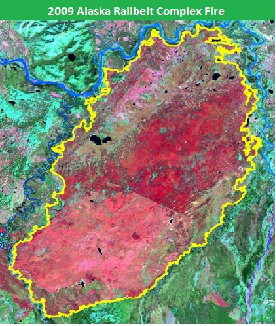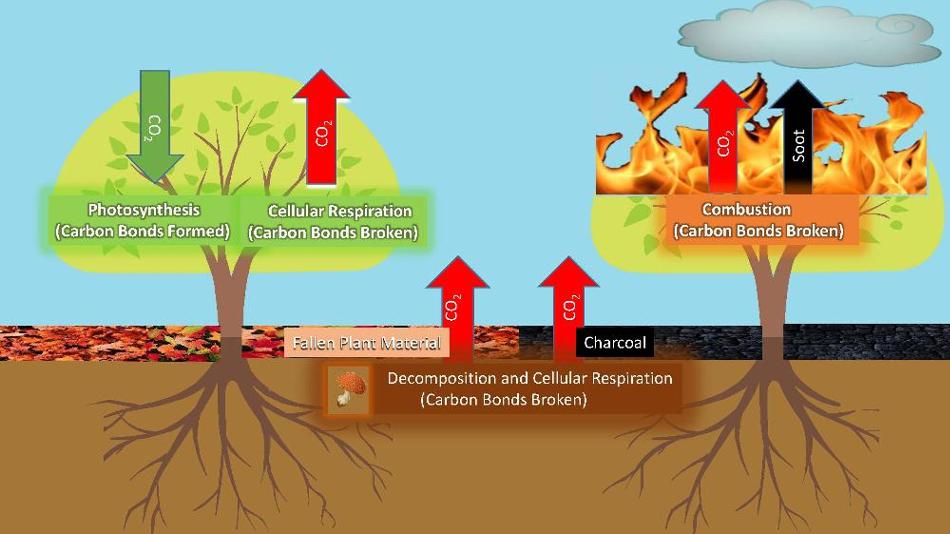Lessons and Learning Activities

Exploring the Effects of Fire on Vegetation Change and the Carbon Cycle in a Boreal Ecosystem
By David Jakim and Dr. Jeffrey Bird, 2013
This lesson for high-school students starts with an introductory presentation regarding the role of fire in forest ecosystems, followed by a case study of the 2009 Railbelt Complex Fire in Alaska. Students use state-of-the-art satellite imagery to create a map of vegetation most severely affected by this Alaska fire and calculate total carbon dioxide emissions resulting from this fire event. Students draw upon this case study to evaluate the effects of fire on long-term changes to forest carbon dynamics and also to assess the relationship between forest fire severity and emissions of additional byproducts that drive climate change.
Exploring the Effects of Fire on Vegetation Change and the Carbon Cycle in a Boreal Ecosystem
This lesson for high-school students starts with an introductory presentation regarding the role of fire in forest ecosystems, followed by a case study of the 2009 Railbelt Complex Fire in Alaska. Students use state-of-the-art satellite imagery to create a map of vegetation most severely affected by this Alaska fire and calculate total carbon dioxide emissions resulting from this fire event. Students draw upon this case study to evaluate the effects of fire on long-term changes to forest carbon dynamics and also to assess the relationship between forest fire severity and emissions of additional byproducts that drive climate change.

- Exploring the Effects of Forest Fire on Vegetation Change and the Carbon Cycle in a Boreal Ecosystem
- Exploring the Effects of Forest Fire on Vegetation Change and the Carbon Cycle in a Boreal Ecosystem
- Burn Severity Mapping Basemap – 2009 Alaska Railbelt Complex Fire
- Maps, Images and Figures – Exploring the Effects of Forest Fire on Vegetation Change and the Carbon Cycle
Lesson Plan by David Jakim and Jeffrey Bird
This lesson plan was made possible by Queens College of The City University of New York and The National Science Foundation Division of Environmental Biology, Ecosystem Science Cluster (Award No. 1127253)
For any inquiries, contact:
David Jakim at David.Jakim@gmail.com and Jeffrey Bird at JBird@qc.cuny.edu

